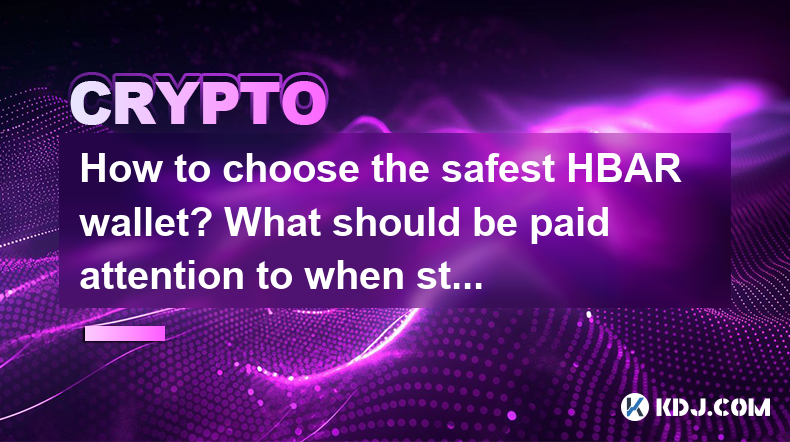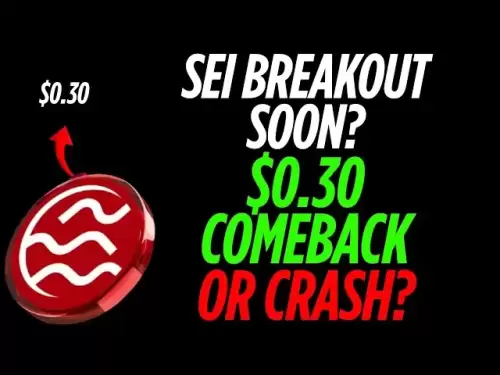-
 Bitcoin
Bitcoin $109,583.2239
0.19% -
 Ethereum
Ethereum $2,583.4612
0.48% -
 Tether USDt
Tether USDt $1.0003
-0.04% -
 XRP
XRP $2.2681
0.70% -
 BNB
BNB $659.9218
-0.52% -
 Solana
Solana $151.4961
-0.37% -
 USDC
USDC $0.9999
-0.02% -
 TRON
TRON $0.2861
1.20% -
 Dogecoin
Dogecoin $0.1718
0.04% -
 Cardano
Cardano $0.5960
-0.07% -
 Hyperliquid
Hyperliquid $40.1233
2.85% -
 Sui
Sui $2.9974
2.48% -
 Bitcoin Cash
Bitcoin Cash $497.1279
-1.76% -
 Chainlink
Chainlink $13.7275
-0.22% -
 UNUS SED LEO
UNUS SED LEO $9.0241
0.70% -
 Avalanche
Avalanche $18.5536
-0.88% -
 Stellar
Stellar $0.2421
1.39% -
 Toncoin
Toncoin $2.8593
-0.51% -
 Shiba Inu
Shiba Inu $0.0...01187
-0.07% -
 Litecoin
Litecoin $90.0023
2.90% -
 Hedera
Hedera $0.1590
2.79% -
 Monero
Monero $322.1495
0.00% -
 Polkadot
Polkadot $3.5453
-1.00% -
 Dai
Dai $1.0000
-0.01% -
 Bitget Token
Bitget Token $4.5733
-1.06% -
 Ethena USDe
Ethena USDe $1.0002
-0.01% -
 Uniswap
Uniswap $7.6345
3.03% -
 Aave
Aave $279.2583
0.47% -
 Pepe
Pepe $0.0...01003
-1.52% -
 Pi
Pi $0.4941
-0.32%
How to choose the safest HBAR wallet? What should be paid attention to when storing and transferring
For Hedera Hashgraph users, selecting a secure HBAR wallet and following best practices for storing and transferring HBAR are essential for asset safety.
May 02, 2025 at 07:14 pm

Choosing the safest HBAR wallet and understanding the best practices for storing and transferring HBAR are crucial steps for any Hedera Hashgraph user. This article will guide you through the process of selecting a secure wallet, and provide detailed instructions on how to safely store and transfer your HBAR.
Understanding HBAR and Its Importance
HBAR is the native cryptocurrency of the Hedera Hashgraph platform, a distributed ledger technology known for its speed and security. As an HBAR holder, ensuring the safety of your assets is paramount. The choice of wallet plays a significant role in this, as it directly affects the security and accessibility of your HBAR.
Types of HBAR Wallets
There are several types of wallets available for storing HBAR, each with its own set of features and security levels. Here are the main categories:
- Hardware Wallets: These are physical devices that store your HBAR offline, providing the highest level of security. Examples include Ledger and Trezor.
- Software Wallets: These are applications installed on your computer or smartphone. They offer a balance between security and convenience. Examples include Hedera Wallet and Atomic Wallet.
- Web Wallets: These are online platforms where you can access your HBAR through a web browser. They are convenient but generally less secure than hardware or software wallets. Examples include Guarda Wallet.
- Paper Wallets: These involve printing out your private keys and public addresses on a piece of paper. They are secure if stored properly but less convenient for frequent transactions.
Factors to Consider When Choosing an HBAR Wallet
When selecting the safest HBAR wallet, several factors should be taken into account:
- Security Features: Look for wallets that offer strong encryption, two-factor authentication (2FA), and multi-signature support. Hardware wallets are often the most secure due to their offline nature.
- User Interface: A user-friendly interface can make managing your HBAR easier and less prone to errors.
- Compatibility: Ensure the wallet is compatible with the Hedera Hashgraph network and supports HBAR.
- Backup and Recovery Options: Choose a wallet that provides reliable backup and recovery options to prevent loss of funds.
- Reputation and Reviews: Research the wallet's reputation and read user reviews to gauge its reliability and security.
Setting Up a Secure HBAR Wallet
Here's a step-by-step guide to setting up a secure HBAR wallet using a hardware wallet as an example:
- Purchase a Hardware Wallet: Buy a reputable hardware wallet like Ledger or Trezor from their official websites or authorized resellers.
- Initialize the Wallet: Follow the manufacturer's instructions to set up your hardware wallet. This usually involves connecting it to your computer and following on-screen prompts.
- Create a New Wallet: Use the hardware wallet's interface to create a new wallet. You will be prompted to generate a seed phrase, which is crucial for recovery.
- Secure Your Seed Phrase: Write down the seed phrase and store it in a safe, offline location. Never share it with anyone.
- Install the Hedera App: Download and install the Hedera app on your hardware wallet. This app allows you to manage your HBAR directly from the device.
- Transfer HBAR to Your Wallet: Use the public address generated by your hardware wallet to transfer HBAR from an exchange or another wallet.
Best Practices for Storing HBAR
Storing HBAR securely involves more than just choosing the right wallet. Here are some best practices to follow:
- Use Cold Storage: For long-term storage, use a hardware wallet or a paper wallet to keep your HBAR offline and out of reach from hackers.
- Regularly Update Your Wallet: Keep your wallet software up to date to protect against known vulnerabilities.
- Enable Two-Factor Authentication (2FA): If your wallet supports it, enable 2FA to add an extra layer of security.
- Diversify Your Storage: Consider splitting your HBAR across multiple wallets to minimize risk. For example, you might keep a small amount in a software wallet for daily use and the majority in a hardware wallet for long-term storage.
Safely Transferring HBAR
Transferring HBAR requires careful attention to detail to ensure the safety of your funds. Here's how to do it safely:
- Verify the Recipient's Address: Always double-check the recipient's address before sending HBAR. A single incorrect character can result in lost funds.
- Use Small Test Transactions: Before sending a large amount, send a small test transaction to ensure the address is correct and the recipient can receive the funds.
- Be Wary of Phishing Scams: Only use official wallet interfaces and be cautious of emails or messages asking for your private keys or seed phrases.
- Monitor Transaction Fees: Be aware of the transaction fees associated with transferring HBAR. Some wallets may charge higher fees than others.
Frequently Asked Questions
Q: Can I use the same wallet for other cryptocurrencies besides HBAR?
A: Yes, many wallets support multiple cryptocurrencies. For example, hardware wallets like Ledger and Trezor support a wide range of cryptocurrencies, including HBAR. However, always check the wallet's compatibility list to ensure it supports the specific cryptocurrencies you want to store.
Q: What should I do if I lose access to my HBAR wallet?
A: If you lose access to your wallet, you can recover your HBAR using the seed phrase you secured during setup. Follow the wallet's recovery process, which usually involves entering the seed phrase into a new or reset wallet. If you lose your seed phrase, unfortunately, there is no way to recover your funds, highlighting the importance of securely storing your seed phrase.
Q: Is it safe to store HBAR on an exchange?
A: Storing HBAR on an exchange is generally less secure than using a personal wallet. Exchanges are more vulnerable to hacks and can be subject to regulatory actions that might affect your access to funds. For long-term storage, it's recommended to transfer your HBAR to a personal wallet, preferably a hardware wallet.
Q: How can I protect my HBAR from theft?
A: To protect your HBAR from theft, use a hardware wallet for long-term storage, enable 2FA on your wallet and exchange accounts, keep your software updated, and never share your private keys or seed phrases with anyone. Additionally, be cautious of phishing attempts and always verify the authenticity of the websites and apps you use to manage your HBAR.
Disclaimer:info@kdj.com
The information provided is not trading advice. kdj.com does not assume any responsibility for any investments made based on the information provided in this article. Cryptocurrencies are highly volatile and it is highly recommended that you invest with caution after thorough research!
If you believe that the content used on this website infringes your copyright, please contact us immediately (info@kdj.com) and we will delete it promptly.
- House, Trump Bill, Bitcoin Rally: A New York Minute on Macro and Crypto
- 2025-07-04 10:30:12
- Coin Master Free Spins: Your Daily Dose of Links (July 2025)
- 2025-07-04 10:50:12
- Crypto's Dual Lifeline: Bitcoin ETFs Soar as Stablecoins Bolster US Treasuries
- 2025-07-04 10:30:12
- Altcoins in July 2025: Market Momentum and Top Picks
- 2025-07-04 11:10:12
- Qubetics Price Prediction: Analysts See $10-$15 in 2026 - Is It Just Hype?
- 2025-07-04 10:35:12
- LILPEPE: The Meme Coin Primed for Explosive Growth with Blockchain Tech
- 2025-07-04 08:50:13
Related knowledge

How to customize USDT TRC20 mining fees? Flexible adjustment tutorial
Jun 13,2025 at 01:42am
Understanding USDT TRC20 Mining FeesMining fees on the TRON (TRC20) network are essential for processing transactions. Unlike Bitcoin or Ethereum, where miners directly validate transactions, TRON uses a delegated proof-of-stake (DPoS) mechanism. However, users still need to pay bandwidth and energy fees, which are collectively referred to as 'mining fe...

USDT TRC20 transaction is stuck? Solution summary
Jun 14,2025 at 11:15pm
Understanding USDT TRC20 TransactionsWhen users mention that a USDT TRC20 transaction is stuck, they typically refer to a situation where the transfer of Tether (USDT) on the TRON blockchain has not been confirmed for an extended period. This issue may arise due to various reasons such as network congestion, insufficient transaction fees, or wallet-rela...

How to cancel USDT TRC20 unconfirmed transactions? Operation guide
Jun 13,2025 at 11:01pm
Understanding USDT TRC20 Unconfirmed TransactionsWhen dealing with USDT TRC20 transactions, it’s crucial to understand what an unconfirmed transaction means. An unconfirmed transaction is one that has been broadcasted to the blockchain network but hasn’t yet been included in a block. This typically occurs due to low transaction fees or network congestio...

How to check USDT TRC20 balance? Introduction to multiple query methods
Jun 21,2025 at 02:42am
Understanding USDT TRC20 and Its ImportanceUSDT (Tether) is one of the most widely used stablecoins in the cryptocurrency market. It exists on multiple blockchain networks, including TRC20, which operates on the Tron (TRX) network. Checking your USDT TRC20 balance accurately is crucial for users who hold or transact with this asset. Whether you're sendi...

What to do if USDT TRC20 transfers are congested? Speed up trading skills
Jun 13,2025 at 09:56am
Understanding USDT TRC20 Transfer CongestionWhen transferring USDT TRC20, users may occasionally experience delays or congestion. This typically occurs due to network overload on the TRON blockchain, which hosts the TRC20 version of Tether. Unlike the ERC20 variant (which runs on Ethereum), TRC20 transactions are generally faster and cheaper, but during...

The relationship between USDT TRC20 and TRON chain: technical background analysis
Jun 12,2025 at 01:28pm
What is USDT TRC20?USDT TRC20 refers to the Tether (USDT) token issued on the TRON blockchain using the TRC-20 standard. Unlike the more commonly known ERC-20 version of USDT (which runs on Ethereum), the TRC-20 variant leverages the TRON network's infrastructure for faster and cheaper transactions. The emergence of this version came as part of Tether’s...

How to customize USDT TRC20 mining fees? Flexible adjustment tutorial
Jun 13,2025 at 01:42am
Understanding USDT TRC20 Mining FeesMining fees on the TRON (TRC20) network are essential for processing transactions. Unlike Bitcoin or Ethereum, where miners directly validate transactions, TRON uses a delegated proof-of-stake (DPoS) mechanism. However, users still need to pay bandwidth and energy fees, which are collectively referred to as 'mining fe...

USDT TRC20 transaction is stuck? Solution summary
Jun 14,2025 at 11:15pm
Understanding USDT TRC20 TransactionsWhen users mention that a USDT TRC20 transaction is stuck, they typically refer to a situation where the transfer of Tether (USDT) on the TRON blockchain has not been confirmed for an extended period. This issue may arise due to various reasons such as network congestion, insufficient transaction fees, or wallet-rela...

How to cancel USDT TRC20 unconfirmed transactions? Operation guide
Jun 13,2025 at 11:01pm
Understanding USDT TRC20 Unconfirmed TransactionsWhen dealing with USDT TRC20 transactions, it’s crucial to understand what an unconfirmed transaction means. An unconfirmed transaction is one that has been broadcasted to the blockchain network but hasn’t yet been included in a block. This typically occurs due to low transaction fees or network congestio...

How to check USDT TRC20 balance? Introduction to multiple query methods
Jun 21,2025 at 02:42am
Understanding USDT TRC20 and Its ImportanceUSDT (Tether) is one of the most widely used stablecoins in the cryptocurrency market. It exists on multiple blockchain networks, including TRC20, which operates on the Tron (TRX) network. Checking your USDT TRC20 balance accurately is crucial for users who hold or transact with this asset. Whether you're sendi...

What to do if USDT TRC20 transfers are congested? Speed up trading skills
Jun 13,2025 at 09:56am
Understanding USDT TRC20 Transfer CongestionWhen transferring USDT TRC20, users may occasionally experience delays or congestion. This typically occurs due to network overload on the TRON blockchain, which hosts the TRC20 version of Tether. Unlike the ERC20 variant (which runs on Ethereum), TRC20 transactions are generally faster and cheaper, but during...

The relationship between USDT TRC20 and TRON chain: technical background analysis
Jun 12,2025 at 01:28pm
What is USDT TRC20?USDT TRC20 refers to the Tether (USDT) token issued on the TRON blockchain using the TRC-20 standard. Unlike the more commonly known ERC-20 version of USDT (which runs on Ethereum), the TRC-20 variant leverages the TRON network's infrastructure for faster and cheaper transactions. The emergence of this version came as part of Tether’s...
See all articles

























































































